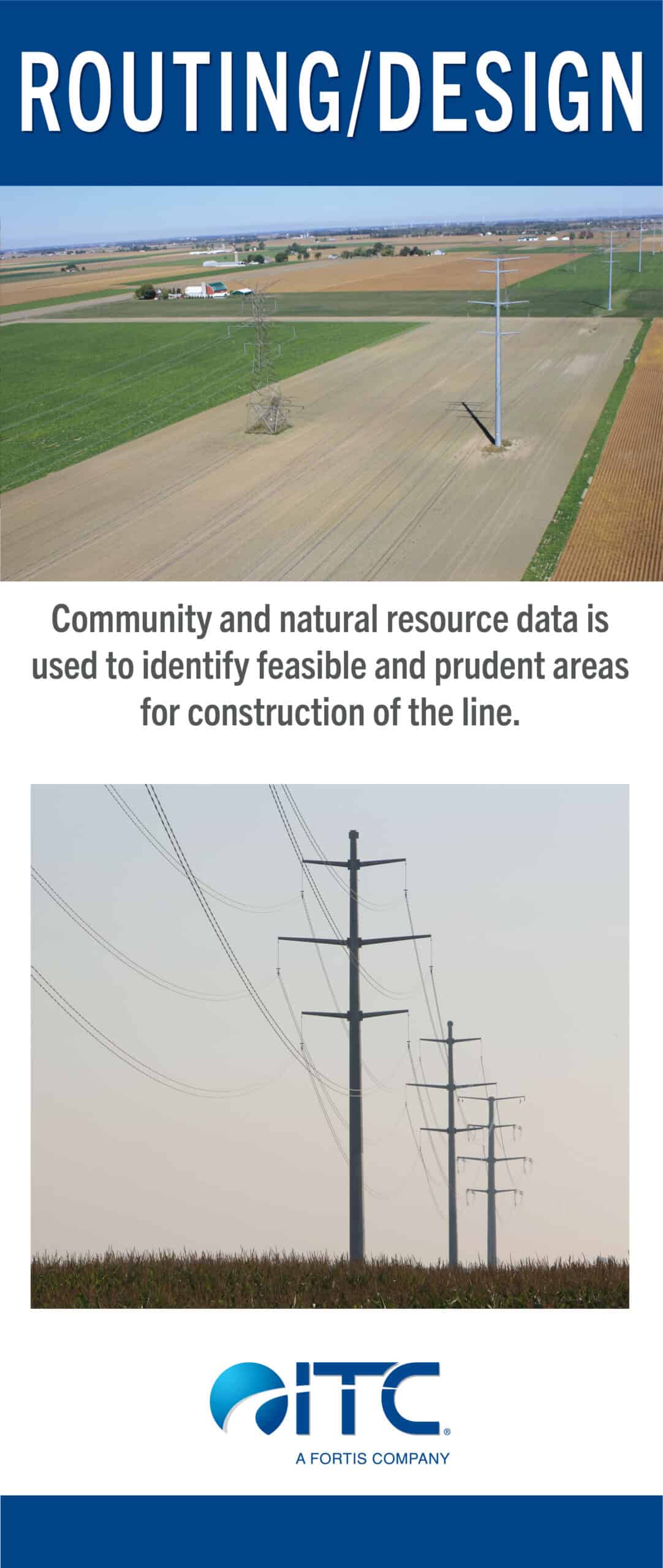The route selection process generally involves comparing potential routing options.
There are several factors that ITC looks at when routing a transmission line. They include several Engineering, Social, and Environmental factors. These can include criteria such as length, line angles, nearby residences or public facilities, wetland areas, historical and archaeological sites, and cropland/center pivot irrigation presence.
We are committed to securing a route that meets the project needs while minimizing the amount of human and environmental impact.
The “Project Area” was delineated by identifying the project endpoints and allowing for enough geographic diversity between and around these areas so that numerous route options could be identified and studied.
Our routing methodology generally includes the following:
- The project area is identified
- Data is collected and mapped
- Potential route segments are identified throughout the project area (route options)
- The route options are analyzed and comparatively evaluated to determine those that best minimized overall potential impact and best adhered to the routing criteria
- Our routing objective is to identify a feasible Proposed and Alternate Route that:
- Minimize the potential for impact overall
- Can be permitted
- Can be constructed
- Are cost effective

